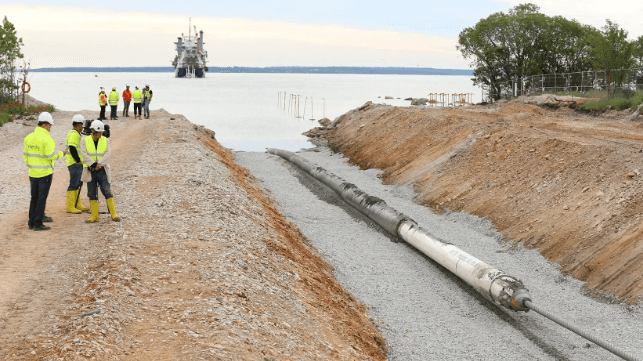Suspected Leak Forces Shutdown of Strategic Gas Line Under the Baltic

Natural gas utilities in Estonia and Finland have had to shut down a subsea gas pipeline under the Baltic because of a suspected leak, operator Elering said in a statement Sunday.
In the early hours of Sunday morning, Estonian gas grid operator Elering and its Finnish counterpart GasGrid detected a sudden pressure drop in the Balticconnector gas pipeline. At about 0200, the pressure in the gas line fell from about 35 bars to 12 bars, then down to six bars. Given the indications of a serious leak, both operators shut down the pipeline at each end.
The outage is not expected to have an immediate impact on customers in either nation. Finland is well supplied thanks to the Inkoo LNG terminal, and Estonia can receive gas from nearby Latvia.
Balticconnector is a 45-nautical-mile gas line between Inkoo, Finland and Paldiski, Estonia. It was designed to build flexibility and resilience into the energy infrastructure for the Baltic states and for Finland. When the line entered into operation in 2020, it connected Finland to the EU internal natural gas market for the first time.
The line can operate in both directions, and it was a key enabler for the construction of the Inkoo LNG terminal on the Finnish side. After the Russian invasion of Ukraine, Finland built a floating LNG regasification terminal and began supplying gas to customers in Estonia and Latvia as well as in Finland, allowing all three to end their dependence on Russian pipeline gas.
The Balticconnector pipeline is a single 20-inch pipe rated for 55 bars of pressure. It can handle about 2.6 billion cubic meters per year. No faults have been detected on the line previously, according to Gasgrid.
The news of damage to a strategic gas pipeline between two NATO states has drawn attention from security analysts, especially since the timing falls just before the start of the winter heating season. A similar strike on a strategic pipeline occurred almost exactly one year ago: On September 26, 2022, a clandestine attack on pipeline infrastructure near the Danish island of Bornholm destroyed three out of the four pipelines in Gazprom's Nord Stream network. An investigation into the cause of this earlier incident is still under way.
While a pipeline inspection for the Balticconnector will take a few days to organize, no seismic signals that would indicate an explosive blast have been detected by earthquake monitoring stations in the region. The Nord Stream pipeline attacks were immediately detected by seismographs in neighboring states.
